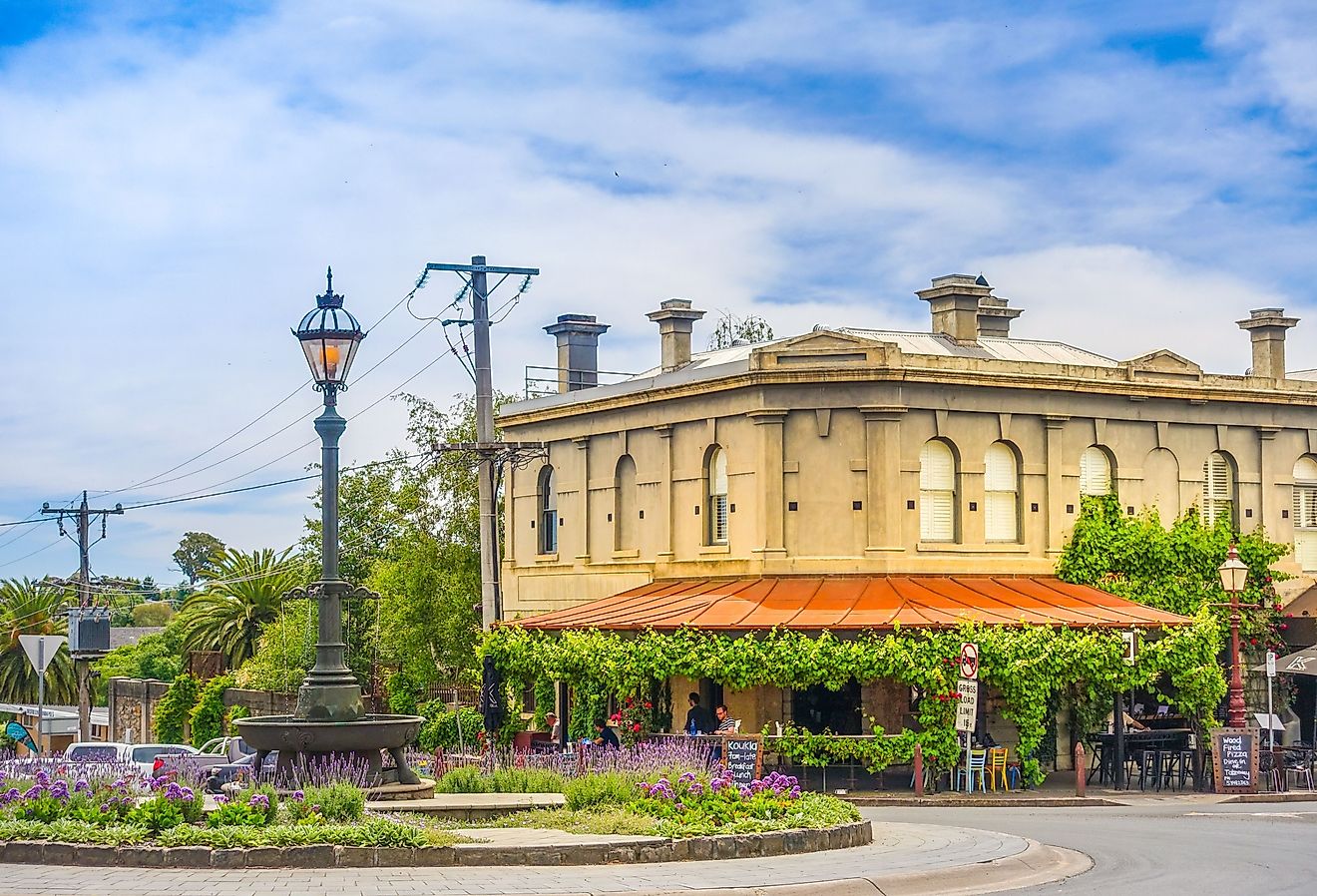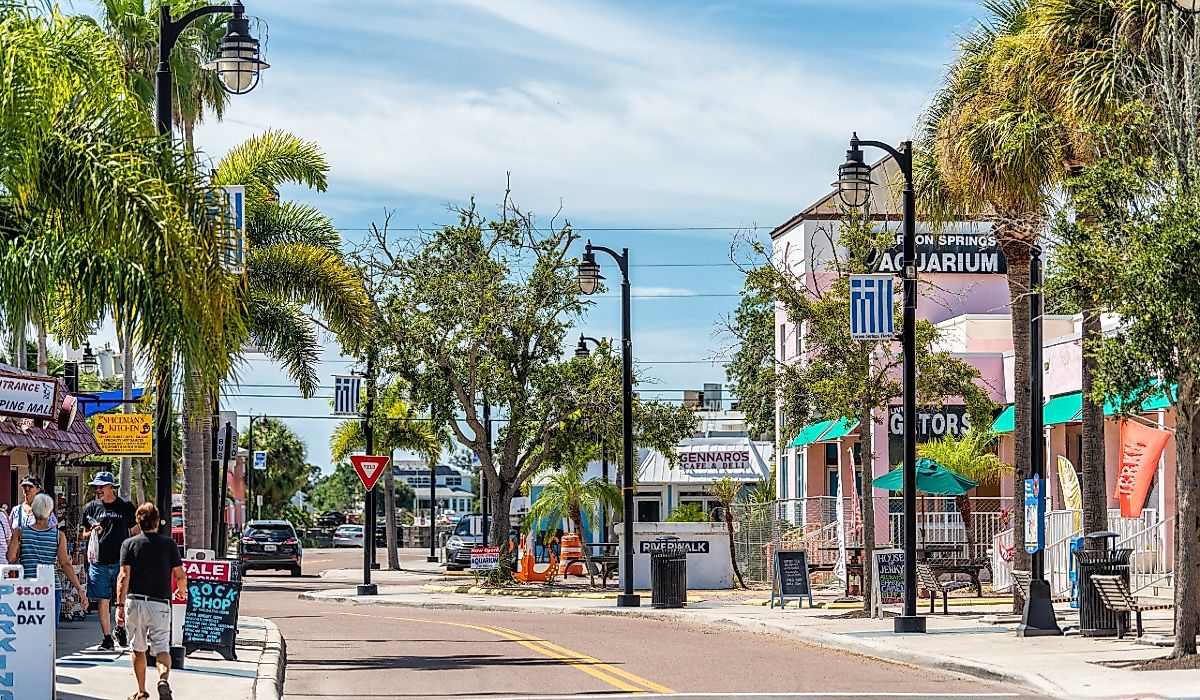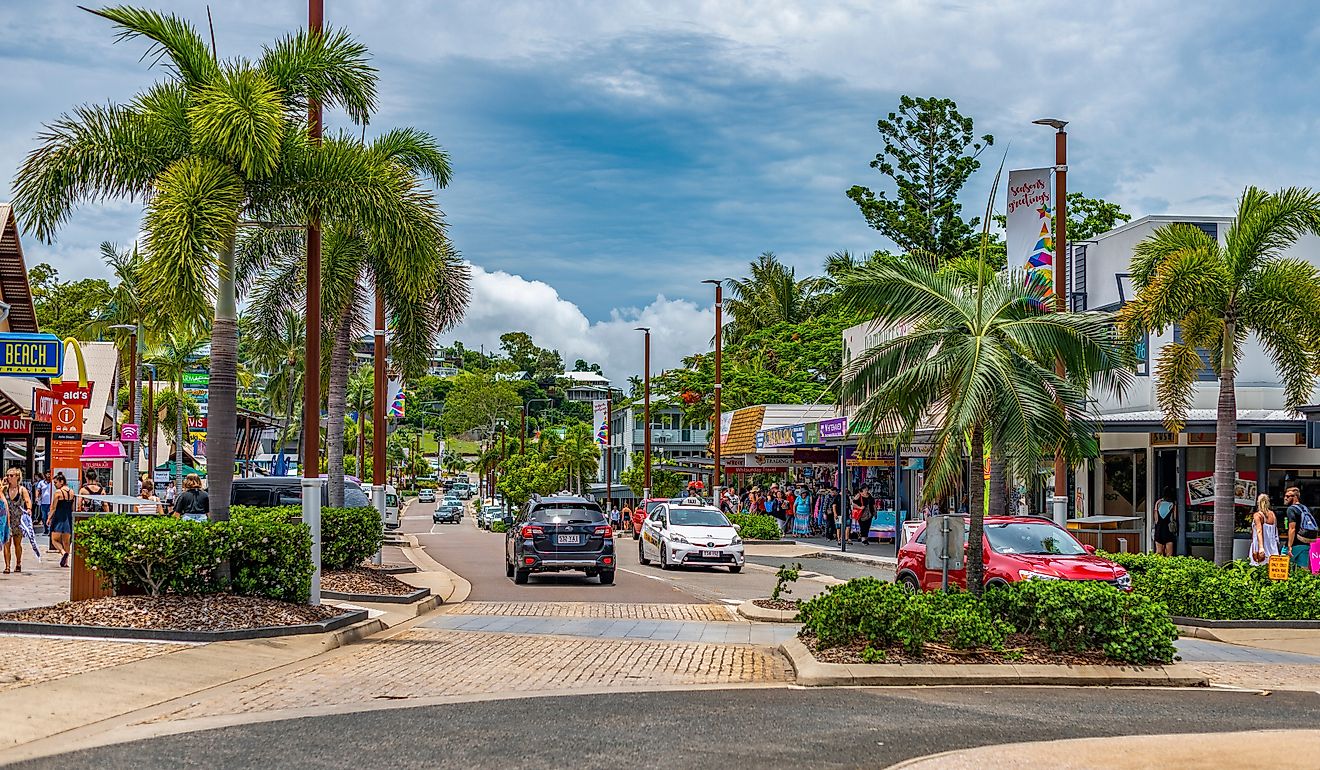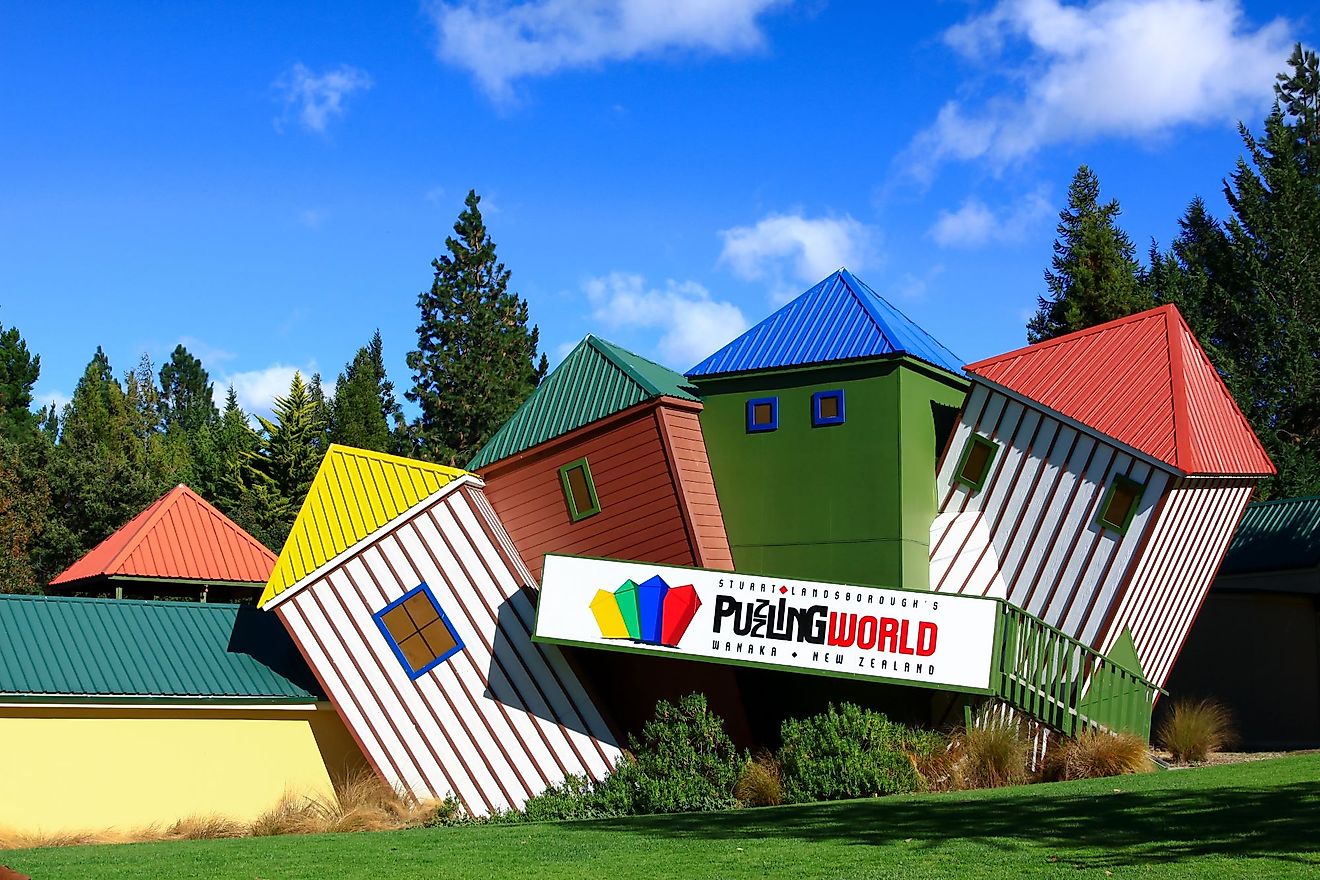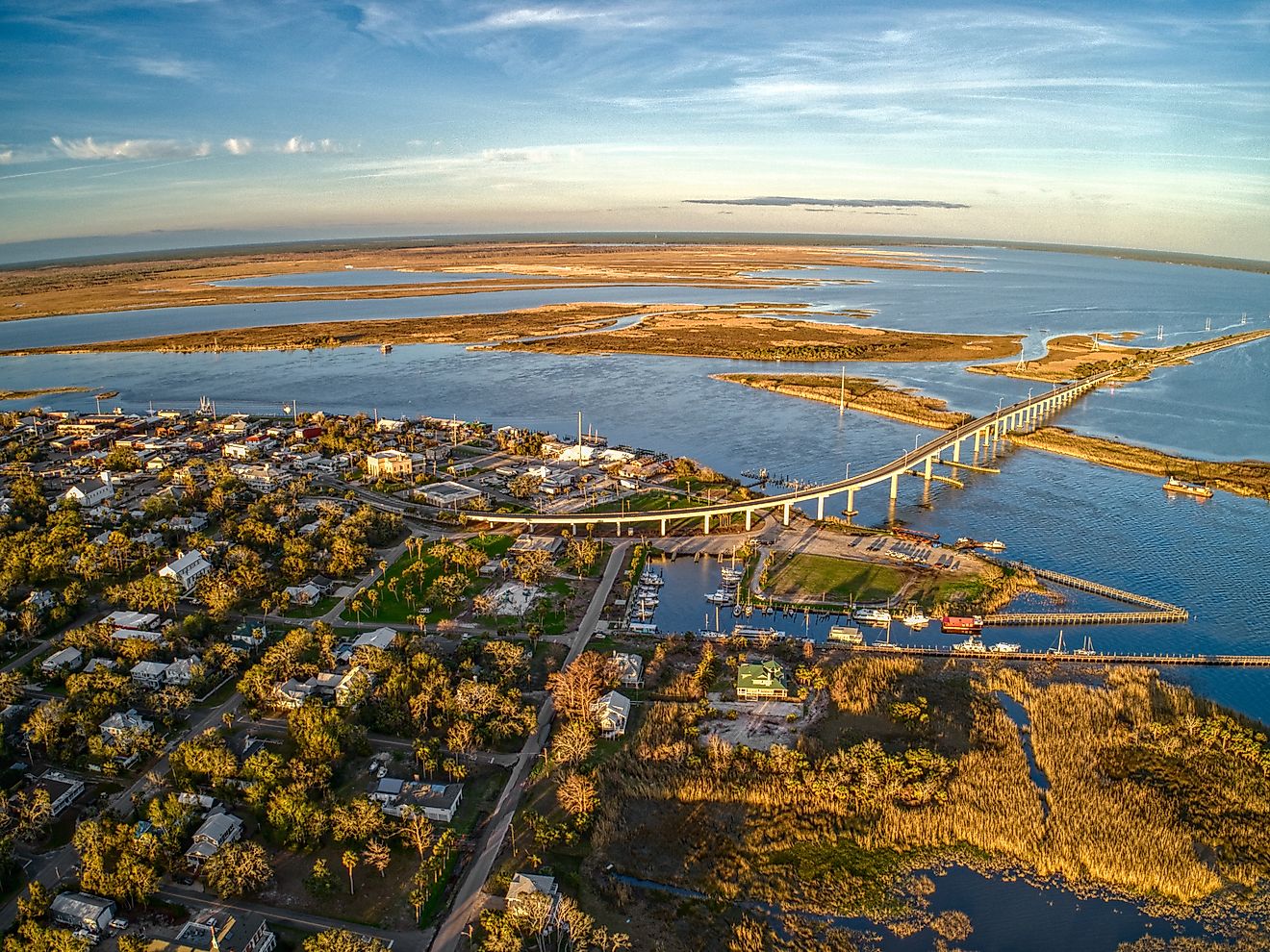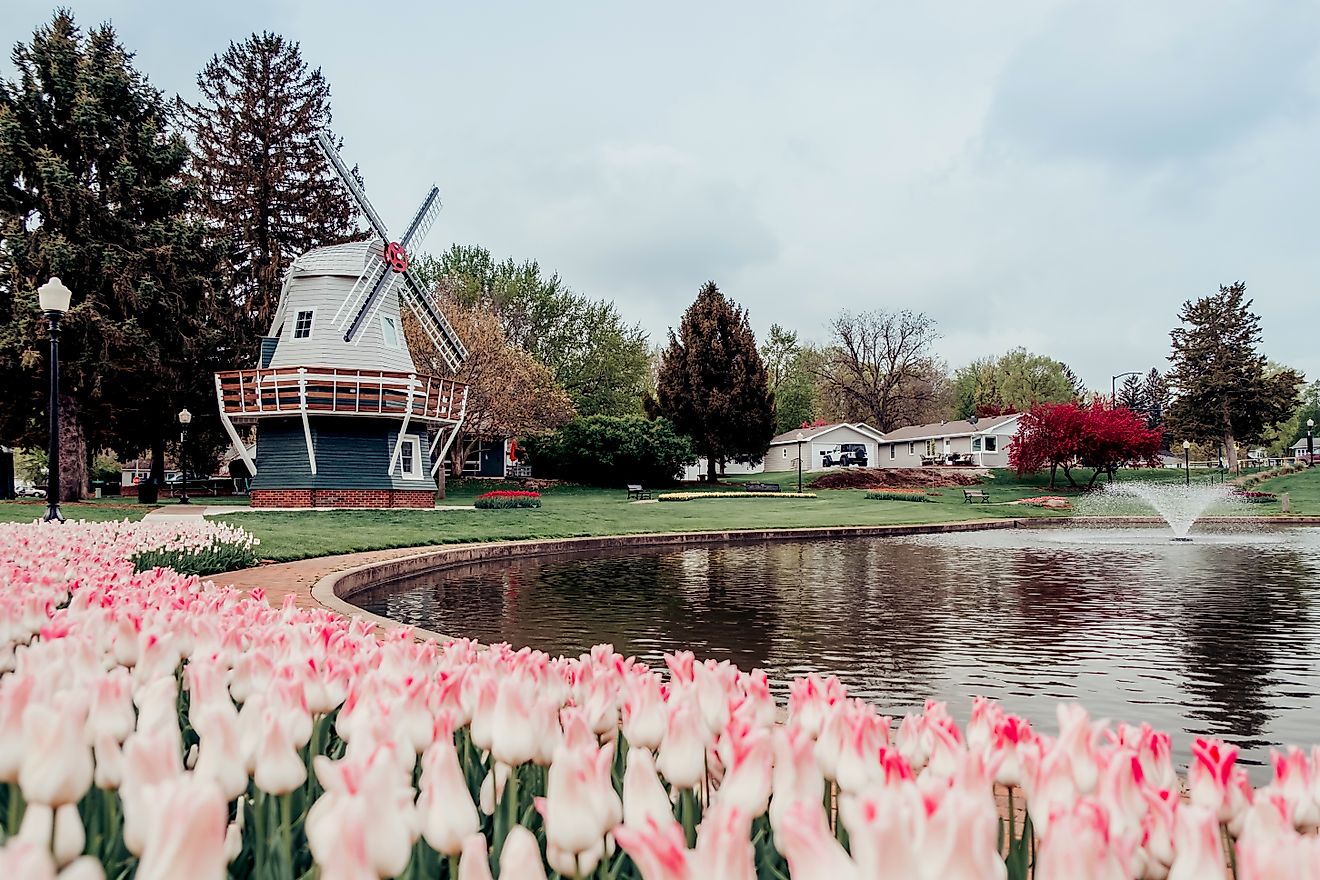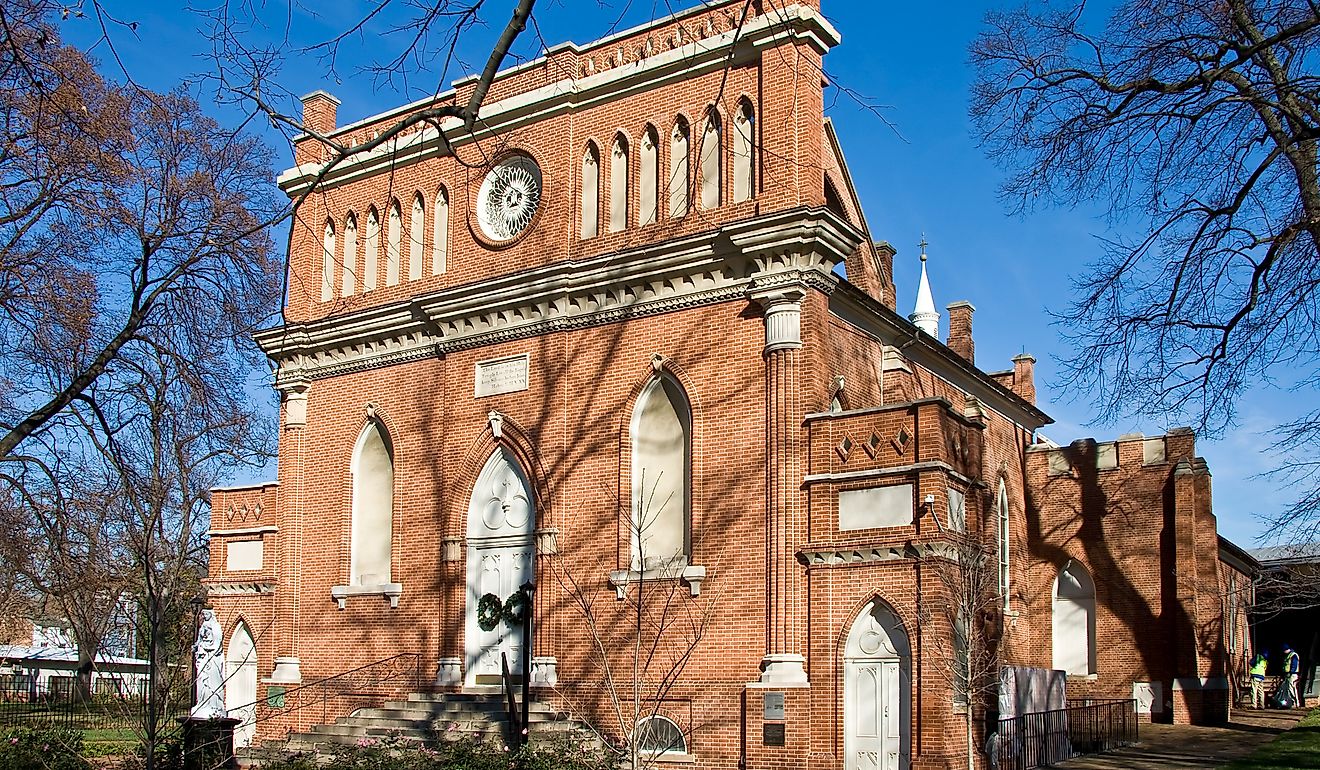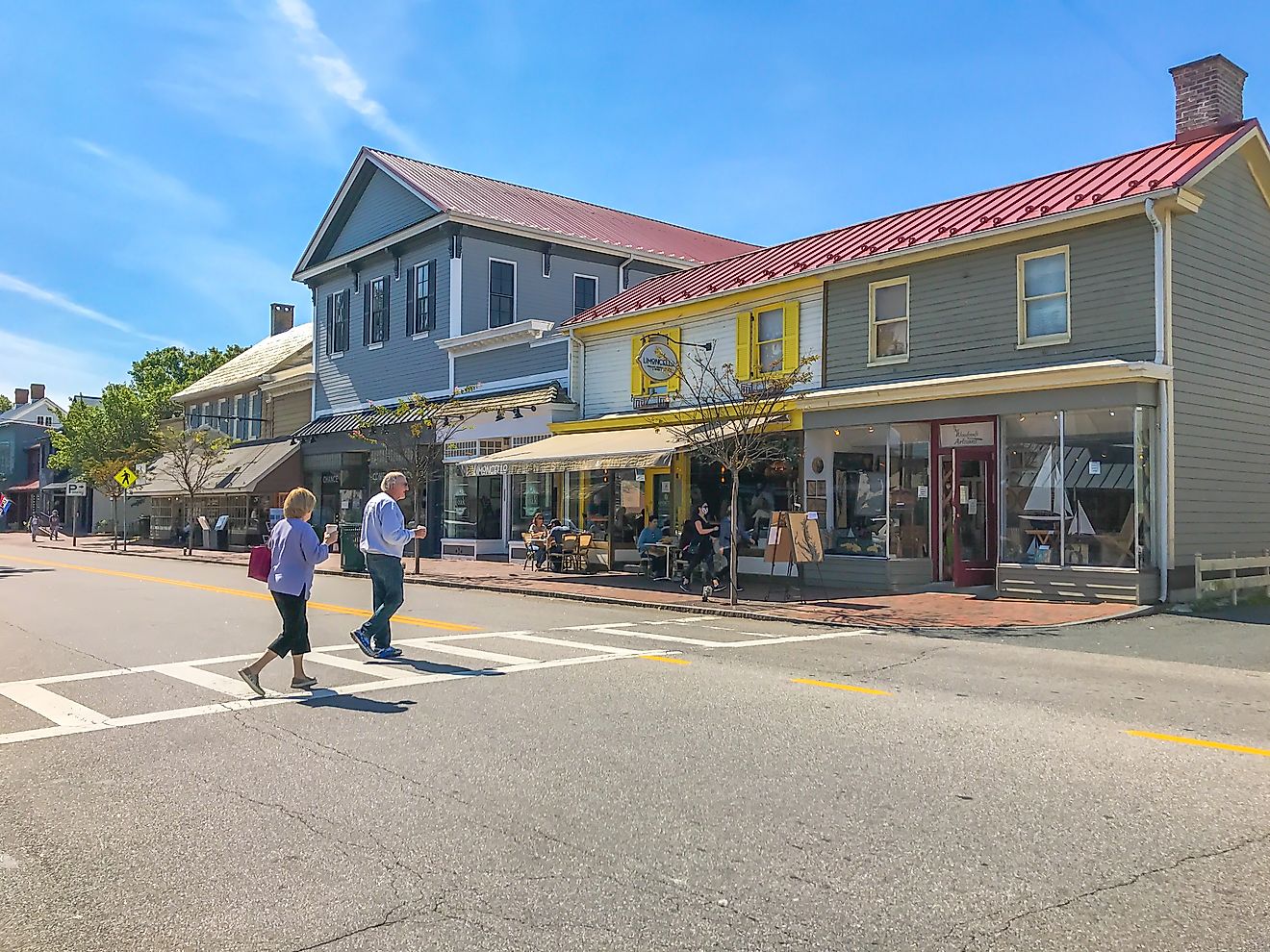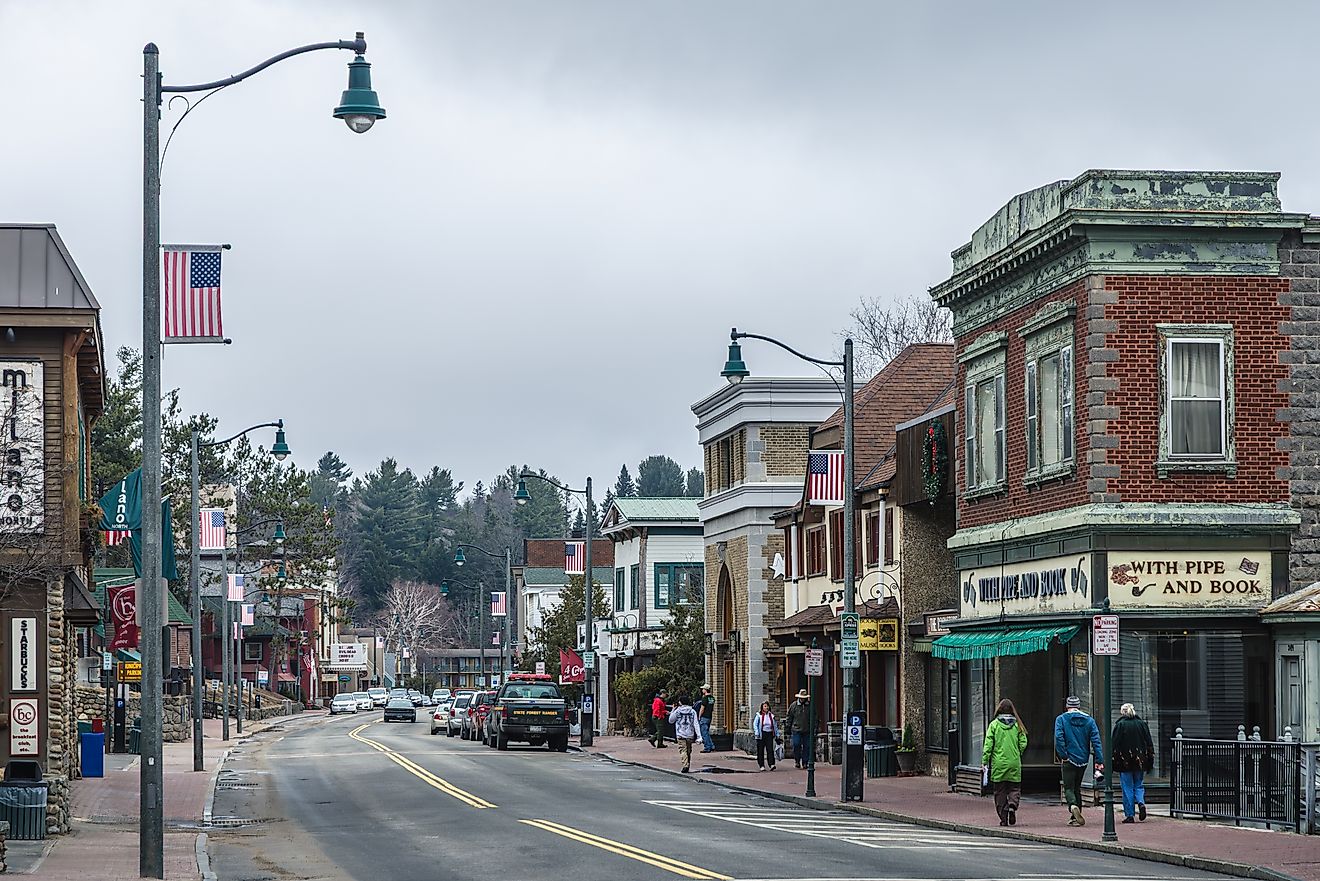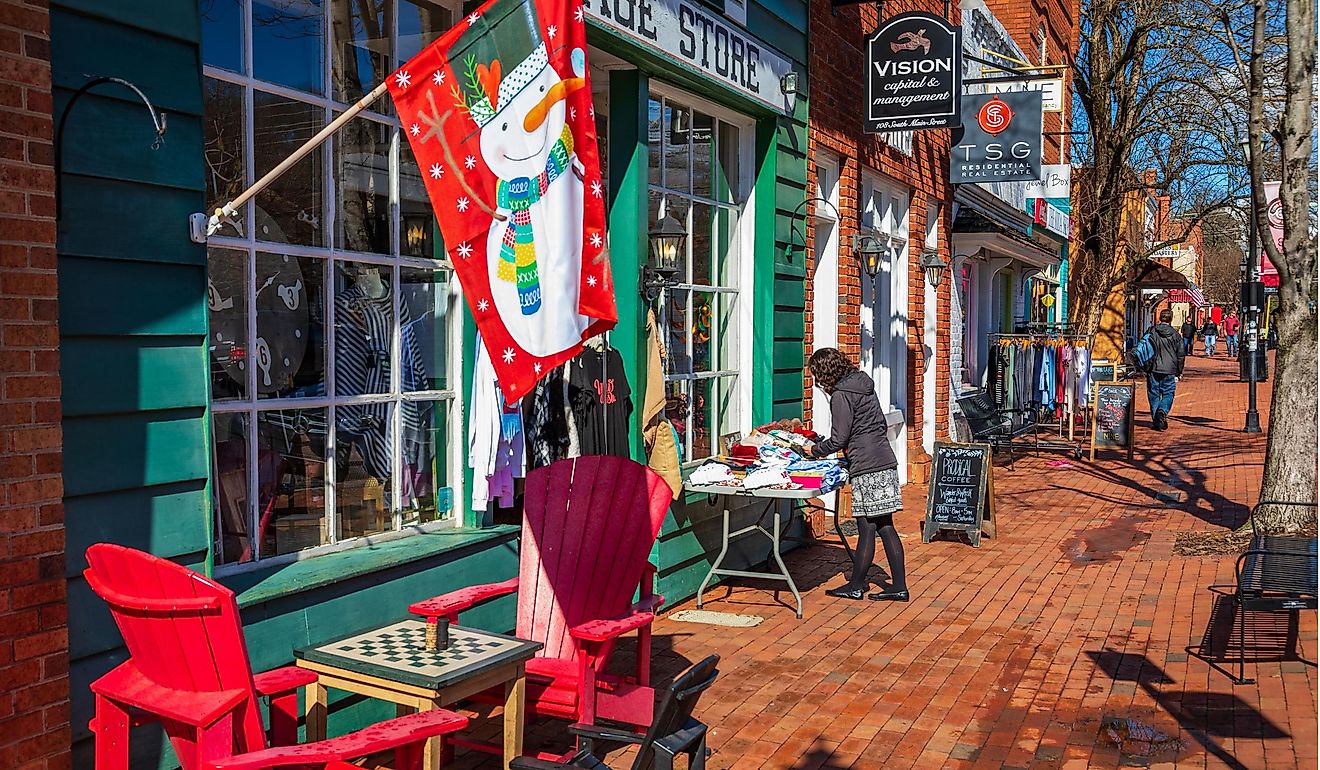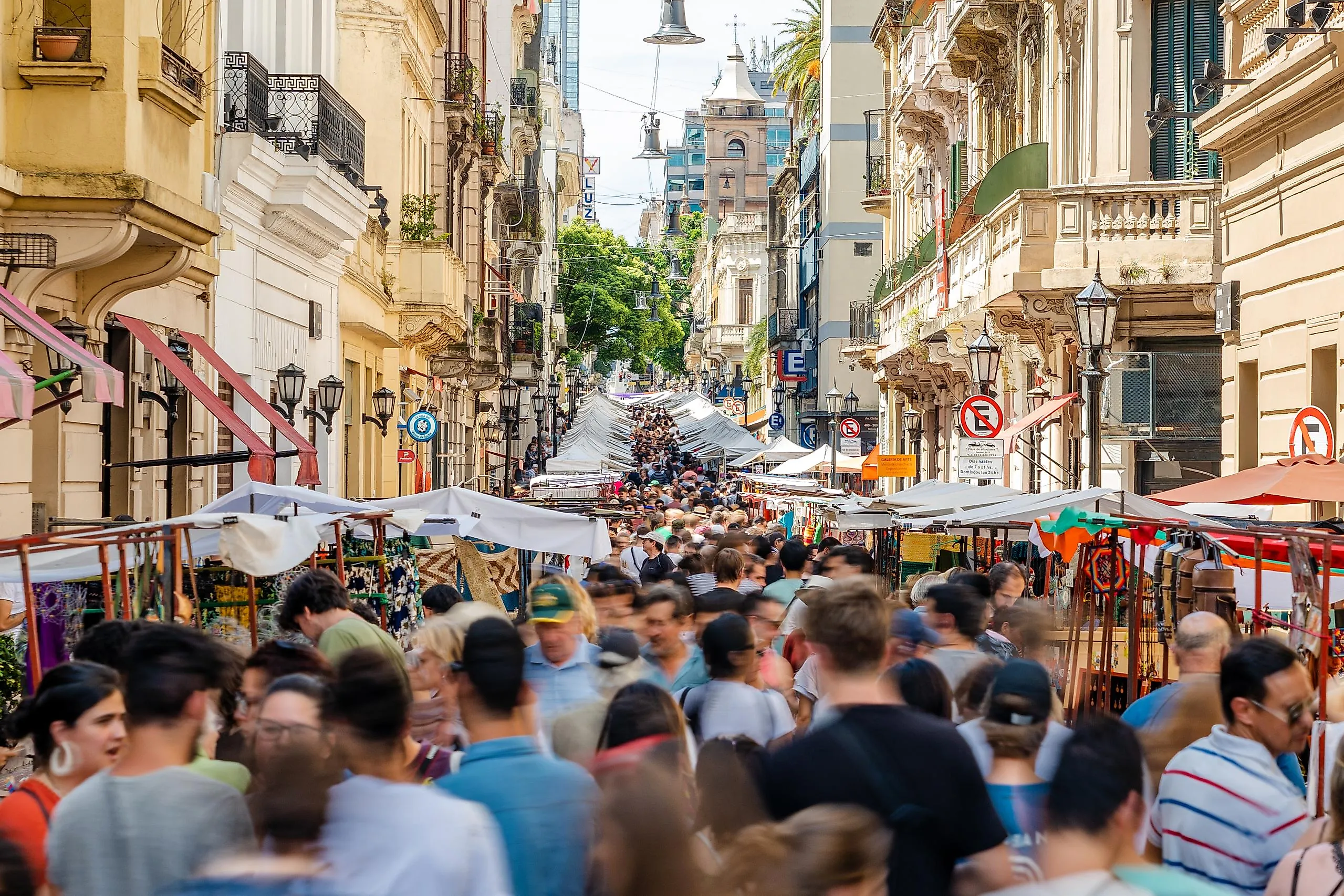
8 Best Small Towns in Argentina for a Weekend Retreat
Argentina, a beautiful country in South America, is a hub for tourism with plenty of amazing facets. The capital city, Buenos Aires, beckons travelers with its charming vibe and futuristic feel, second to none. The city also has various satellite towns throughout the coastal province, each more picturesque than the last. From the beaches to the mountains and lakes in between, December, January, and February prove to be the most popular months to visit.
The Salta province, home to the first town, and the majority of Northern Argentina, home to Purmamarca, have average fall temperatures of 20°C (68°F) and rain, which means lush nature is abundant. Cafayate is a vibrant town in southern Salta to discover through history, food, and the land of high-altitude wine. Similarly, each town has its own story to share, with a unique slice of Argentina on display.
Cafayate
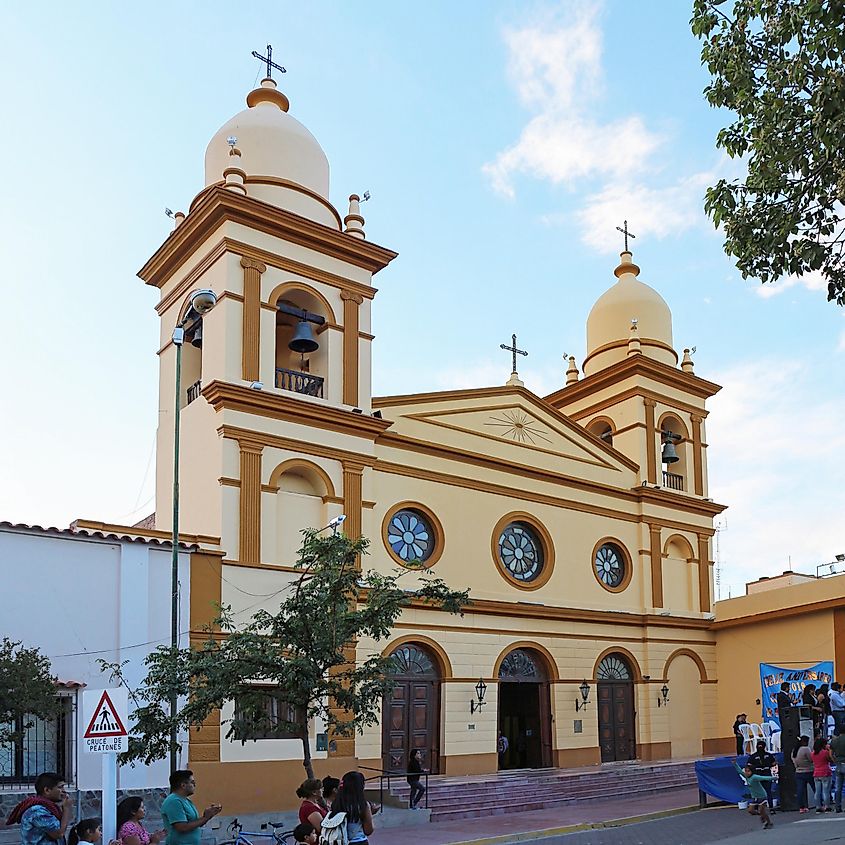
The tranquil town in the green vines and the soaring mountains beyond is a seductive destination in the Northwest, thriving through its popularity. The sun, reflecting off of verdant vineyards, red stones, and red and black ponchos, makes for a sensational world of colors in the crisp air at 1,683 meters above sea level. Featuring a semi-arid climate with warm and cold temperature changes from day to night, visiting from April through November is ideal, with the cusp of Argentina's summers being less crowded. Getting here is also easy, as Cafayate is accessible by bus or car via Ruta Nacional 68 from Salta Capital City (183 km) or Ruta Nacional 40 from the south.
Upon arrival, the town captivates weary travelers with its local peñas, guitar players, festivals, and the unmissable aroma of wine. This is because Cafayate is Argentina’s second center for quality wine production in the Calchaquíes Valleys, whose rich agricultural gifts pair with regional wines and vineyard strolls. Tourists can indulge in liquid delicacies at renowned wineries such as Bodega El Esteco and Piatteli Vineyards. Continue the luxury in town, from the boutique Patios de Cafayate to the Hostal Andino Solo Adultos with free breakfast.
The active can enjoy nature strolls through suburbs where rivers hide waterfalls and trails lead to painted caves. Further out, dunes with small white sand mountains change shape by the hour, creating a spectacular scene under the moonlight. Back in town, enjoy quick access to Instagrammable landscapes, like pink sands, cactus-dotted vineyards, and donkeys grazing near the central plaza.
El Calafate
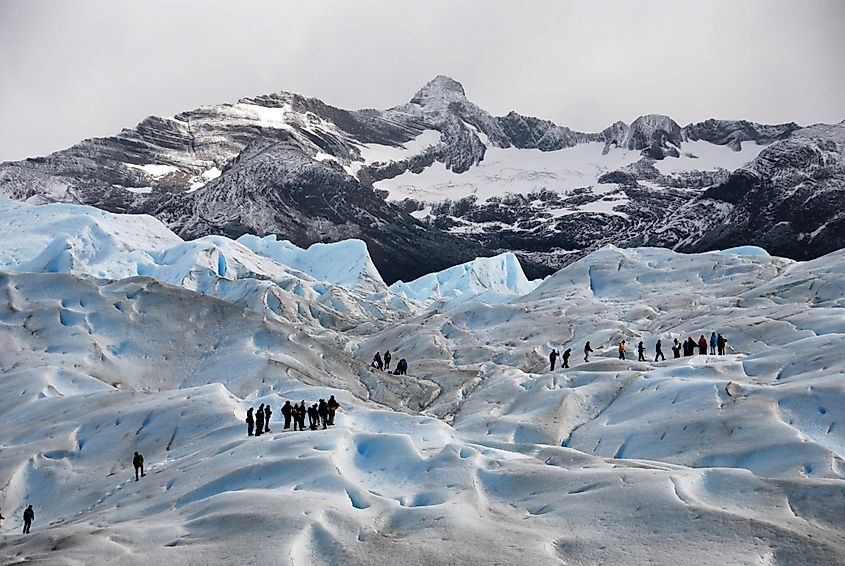
El Calafate, a colorful town in Patagonia along the lake Lago Argentino, is some 80 km (50 mi) away from its star attraction, Perito Moreno Glacier. Adventurers here for the natural grandeur can drive or join local tours to one of the world's most magnificent glaciers, unique and still growing. Local agencies offer private trips to these sights with activities like ice walking or drinking whiskey on glacier ice. Just meters away from you, Perito Moreno crackles 24/7 as the ice melts until a front wall falls in a breathtaking spectacle for lucky observers! Thus, it is a top-rated destination, with viewing platforms and easy trails that let one explore, observe, and relax at the sight of nature's power.
In town, the Centro de Interpretación Histórica Calafate displays 100 million years of local history, from dinosaurs to megafauna, and patrons in the dress of the original peoples. Don't miss the huge Glaciarium, an ice museum with interactive displays that kids adore. Meanwhile, foodies flock to enjoy the local chocolate at Laguna Negra Café among the vast selection of chocolatiers in town. Or, opt for the town’s namesake, the El Calafate berry, native to the region and available in every form, like berry-infused beer, ice cream, syrup, and jams. 70 km (44 miles) away, Onelli Bay is the perfect place to end the day, offering a romantic locale where couples can share a bottle of champagne.
El Chalten
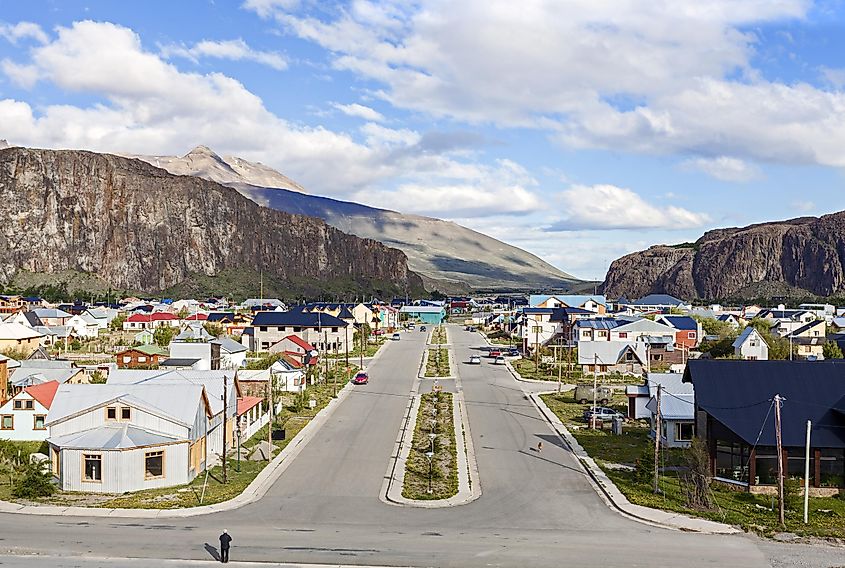
El Chalten, a quaint town in Patagonia, is renowned for its peaky vistas, spectacular Italian cuisine, and scenic drives. You can explore the town on a weekend excursion at every comfort level, from adrenaline-rushing whitewater adventures to the unmissable Lago del Desierto vehicle- and cyclist-designated routes. In the looming shadow of Mt. Fitz Roy, El Chalten, located within the Glaciares National Park, offers a real taste of Argentina. The park engulfs 7,300 sq km (2,800 sq mi) of glaciers, mountains, and lakes for an outdoor wonderland connected to town via scenic trails.
Another popular activity is whitewater rafting down the Rio de Las Vueltas, with fast and slow sections to savor the scenery. Budget travelers don’t need to fret, as tours provide rafting equipment, snacks, and a shuttle for about USD 100 per person! For a more relaxing experience, one can opt for tours of the iconic Laguna de Los Tres, Loma del Pliegue Tumbado, an observation deck, and Laguna Torres. At Lago del Desierto, you can board a cruise to the stunning Vespignani Glacier for a short hike to take in the impressions. Speaking of hiking, look no further than the easy, 3-hour Chorrillo Del Salto trek to a waterfall or the slightly longer Mirador Del Torre. Post-adventure, El Chalten offers a choice of microbreweries. Using some of the cleanest water in the world for your craft beer, try La Cerveceria, La Birre del Rancho, and La Zorra Taproom, with happy hours for as little as USD 2 per pint!
Purmamarca
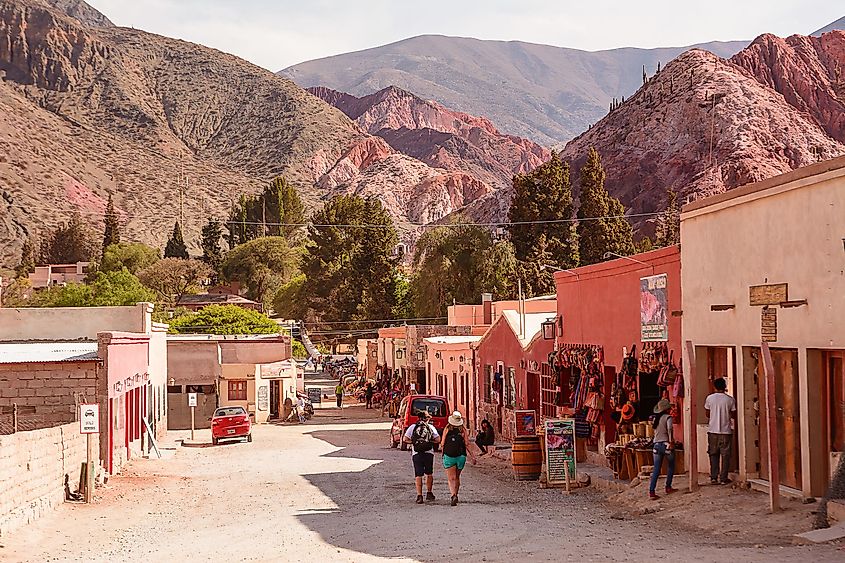
This visually striking village in the Andes attracts adventurers, artists, and crafts fans looking for textiles, clothing, and rugs at stellar prices, among other types of shopping. It is home to one of the most vibrant markets in South America, with woven goods, ceramics, textiles, and other genuine products inspiring a home makeover. Shopping areas like the Feria Artesanal de Purmamarca call out to tourists with their vibrant displays. After shopping, don't skip out on local cuisine, like at upscale and rustic eateries. Los Morteros is an excellent choice, with authentic dishes from Northern Argentina, like lamb and empanadas.
A great idea for Purmamarca is a weekend trip for hiking and photography. There are many scenic walks from the colorful town to landmarks. Its star attraction is El Cerro de los Siete Colores, a coastal reprieve of beauty. Another option is the Hill of the Seven Colors, a 2.4 km (1.5 mile) trek along the Paseo de los Colorados with breathtaking views of the rocks in shades like bright reds, pinks, golds, and greens. Additional outdoor formations like Tilcara create a world of opportunity hikers adore. Back in town, walk along the desert cemetery, down the main Rivadavia street, which features DIY mausoleums, headstones, and gravesites against the backdrop of the beautiful red mountains. You will pass along the large church in front of the bright central plaza, several vendors, and storefronts in designated market sections.
San Antonio de Areco
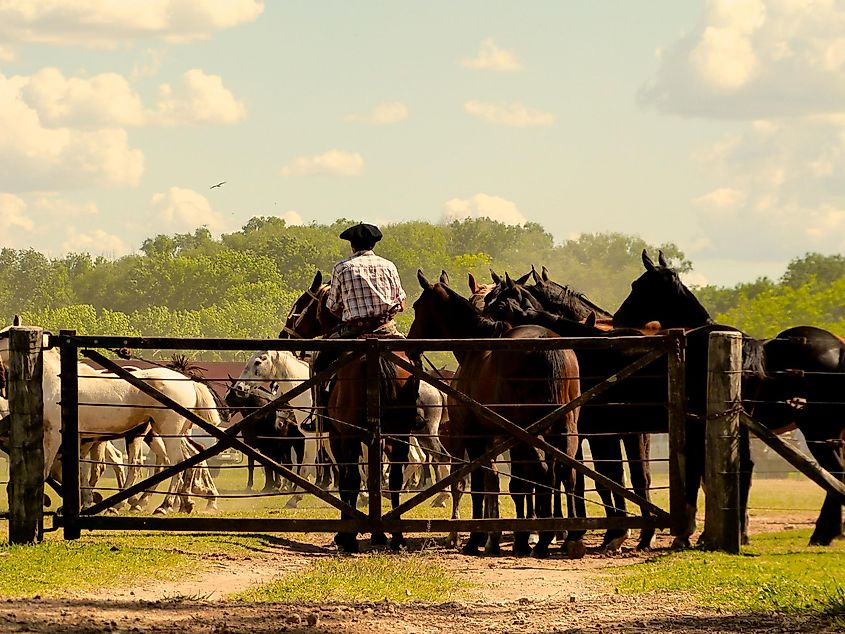
Nestled some 70 miles (113 km) northwest of Buenos Aires, San Antonio de Areco is the prettiest town in the pampas. It caters to daytrippers from work in the city, the porteños, with enough engagements for tourists to outlast a weekend getaway! The town from the early 18th century boasts well-preserved Gaucho and Criollo traditions along its picturesque streets. Visitors can enjoy browsing for fine silverwork and saddlery from the artisans of Criollo descent. Or, plan for November’s Fiesta de la Tradición in the warm weather when Gauchos from all over the pampas gather on their horsetop finery. The cobbled streets offer the feel of Argentina centuries ago, with a slumbering pace and lush farmland all around.
The 1857 Puente Viejo, an old pedestrian bridge spanning the Río Areco, was part of the original cart road to northern Argentina. Today, it leads to San Antonio de Areco’s main attraction, the sprawling Museo Gauchesco Ricardo Güiraldes in Parque Criollo, from 1936. This museum is dedicated to the author of Don Segundo Sombra and local gaucho culture, with gaucho money belts, silverwork, and paintings. Its entrance is a re-created pulpería (tavern), the same as in 1850, with a workshop and working loom inside, weaving traditional woolen ponchos and blankets. As the day ends, opt for comfort, from delicious chocolate at La Olla de Cobre to a cozy stay at the Estancia (ranch) El Ombú de Areco.
Tigre
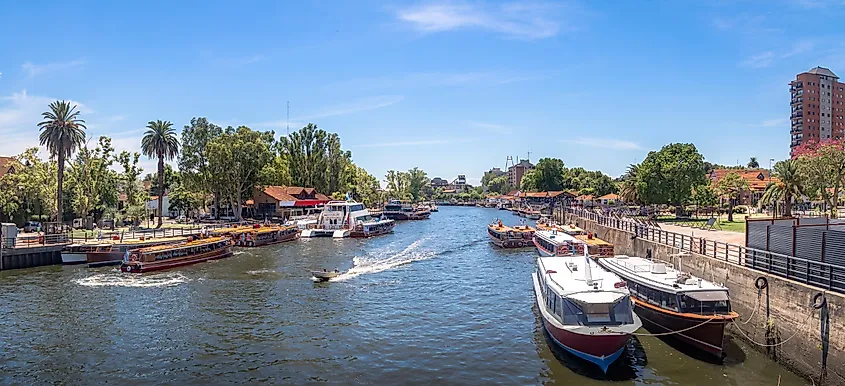
Tigre is the Venice of Argentina, abounding in charm and attractions, right in the province of Buenos Aires. With everything pointing to a spectacular weekend getaway, it is even more than what you bargain for, from its famous art museum and fruit market to the Tigre River Delta and island-hopping. Artists love the Museo de Arte de Tigre 1912, which was declared of National Historical Interest in 1979 for its distinctive architectural values, and in 2006, a museum with its beautiful art collection mainly from the 19th and 20th centuries.
It is impossible not to fall in love with the charming town along its fruit market, one of the liveliest places, where fruit arrived from the Paraná Delta to its small wharf before being sold in Buenos Aires until the mid-20th century. The market by the wharf expands with craft and decoration, local food restaurants, fast food, and a small Chinatown—an idyllic place to mingle with the locals! The city feels in harmony with nature, with waterfront spots like Paseo Victorica, where one can eat, sit, or drink with the views.
Tigre, referred to as "continente" by locals, straddles the T-junction of the River Tigre and River Lujan, with its colonial buildings, cool street art, and the artisanal port market, while Uruguay is across the water. Tourists can sail and hop from the city via one of the boat-collectivos used by island commuters, along the beauty of the river to the lushly vegetated isles.
Villa Gesell
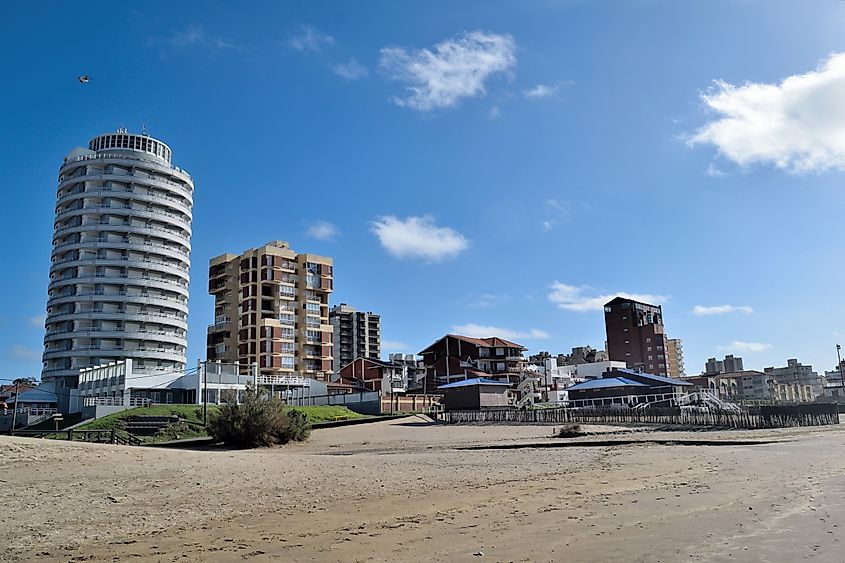
Villa Gesell is a sparsely populated town with extensive, beautiful beaches with yellow, grainy sands. The active will enjoy exploring dunes and shady pine forests near the Villa Gesell beach, with a wide range of outdoor activities like surfing, kitesurfing, fishing, and golfing. Its emerald water lapping under the summertime heat is a popular way to escape the winter back home—pure bliss—with the lowest crowds. Further in the year, March and November still offer warm to hot midday weather.
The smooth seashore descent is perfect for all ages to access the beachy pleasures, where the waves stay low, and the water is crystal clear and clean. The Muelle de Villa Gesell pier, where local fishermen catch trout, sea bass, and bream, is a favorite among locals and out-of-country visitors, with a romantic photo backdrop. Home to eclectic shops for vacation mementos, the accommodation options range from budget-friendly hostels to luxury hotels. For example, Aguas de Oro is a stunning resort with a pool and game room to keep visitors busy. As night falls, the town offers a vibrant nightlife to celebrate each evening on your getaway, including restaurants and bars.
Villa La Angostura
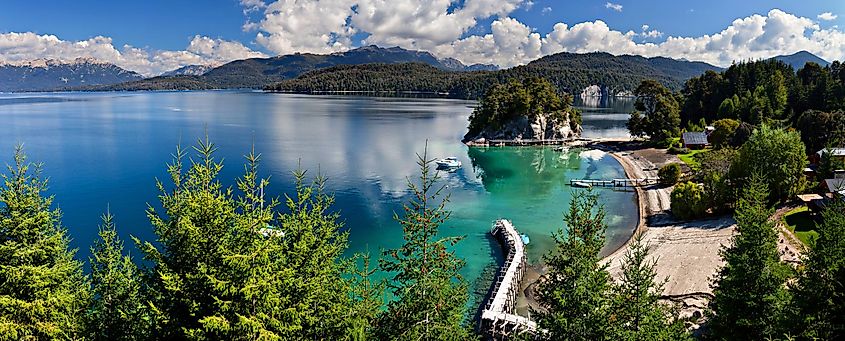
The charming resort town of Villa La Angostura in the province of Neuquén attracts sightseers and photographers. With access to crystalline lakes, dense forests, and mountains, the locals enjoy the ski hill Cerro Bayo, Patagonia's best-kept winter secret. The lakeside mountain town with its rugged views has the rustic yet cozy appeal of an alpine village with mostly log cabins, which feels right out of a fairy tale. Striking is another way to describe this town, home to the renowned rose gardens it celebrates over an annual Garden Festival. Visitors can absorb all the magic through outdoor recreation, like waterside pleasures, mountain hikes, and a collection of cozy wooden lodges hugging the shore in the eastern suburb of Bahia Manzano.
Villa La Angostura also has a romantic allure, with spots like the Las Balsas Hotel, where one can enjoy an afternoon tea on the back porch overlooking a private beach. Its personified touches include an impressive collection of fishing flies in the library, the beautiful hand-painted tile murals in the bar of your room, and “kids' rooms.” Nestling along the north shores of Nahuel Huapi Lake, there is plenty of coastline for sailing, fishing, and swimming against stunning scenery. Back in town, the impeccable main street features shops, excellent restaurants, and arteries lined with rose bushes, hence the town's nickname, the Garden of Patagonia.
Argentina has a rich and diverse culture reflected in its unique towns, perfect for tourists. From the stunning glaciers near El Calafate to the tranquil beauty of Villa La Angostura, there is something for everyone in Argentina. Moreover, each town has its slice of outdoor appeal, whether this is coastal beaches or majestic mountains. When planning a weekend retreat, spring and fall feel best for hikes with many bubbly visitors. Meanwhile, in the winter months, from June to August, the average daily temperatures in Buenos Aires Province are around 15°C with rainfall, which is great for low crowds, tours, and scenic drives.
